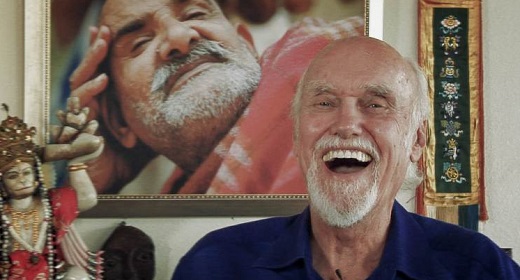by Ed and Deb Shapiro: Ed was part of the flower power love generation of 1960’s hippies, the essence of which was the freedom to be ourselves…
 The explosion of yoga and meditation began then, as Ed and others headed to India to learn with Eastern gurus. In the process, we learnt a very important lesson: no one else can save us, tell us what to do, or how to do it. We had to discover such freedom through our own insights and experiences, for the truth is genuine only within each one of us. We can be led to the door but we have to open it ourselves.
The explosion of yoga and meditation began then, as Ed and others headed to India to learn with Eastern gurus. In the process, we learnt a very important lesson: no one else can save us, tell us what to do, or how to do it. We had to discover such freedom through our own insights and experiences, for the truth is genuine only within each one of us. We can be led to the door but we have to open it ourselves.
Ed, who was raised in the Bronx, was repeatedly shouted at and punished by his
stepmother, made to feel scared, insecure, uncertain, and that his feelings were
irrelevant. So trusting himself and his own insights took some time. Such an experience
is one reason why so many people look outside themselves for validation or answers, or
look for someone or something to give them meaning and direction. There is a deep
yearning for someone to save us. The myth of freedom is this belief that if we give our
power away to a higher authority, whether the church, temple, or religious leader, that
we will be saved.
We turn to the guru, teacher or scriptures in the belief this will resolve our problems, make us better people and our lives worth living. We believe that as long as we practice something enough—whether prayer, mantra recitation, hatha yoga, confession, meditation—we will be freed of our limitations. The external figure, technique or practice thus becomes a symbol of our potential freedom.
We pray for redemption but often without any clear idea who or what that redemption means, other than something greater than ourselves that will dissolve our doubts and confusions and show us how to go beyond our limitations. We make others responsible for our happiness and then blame them for our unhappiness; when things go well we thank God, when they go badly we are convinced that God has failed us or we are being punished for our wrongdoing.
The myth of freedom is the belief someone else can be an intermediary between ourselves and our awakening. For instance, some years ago, when Ed was at a meditation center, he noticed one of the women arranging some beautiful flowers on a table by the chair of the teacher due to speak later that day. Ed went to smell the flowers, only to be told, “No, no, you must not smell them! Guru has to smell them first!” A few years later that same woman, who had appeared as such a devout follower, heard a story about the guru that upset her. Almost immediately she condemned him. She had put him on such a pedestal that was unable to reconcile the sacred image she had created with the real one that showed he was simply human.
It is our own limited beliefs that blind us, that distract us from seeing who we truly are, like the dust on a mirror that prevents us from seeing our true reflection. There is no doubt that prayer and meditation are essential components of the spiritual path, as they invite us to go beyond our limitations—but they are the means not the end itself.
****
Ed & Deb are the authors of newly released: The Unexpected Power of Mindfulness & Meditation, and The Art of Mindful Relaxation. Deb is the author of Your Body Speaks Your Mind, now in 19 languages








































